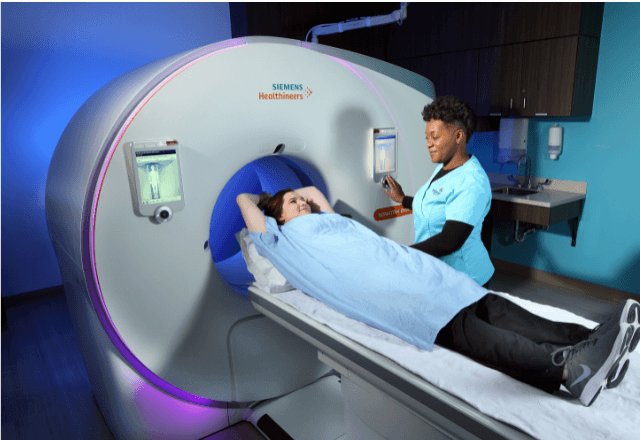CT Imaging for Nasal Cavity Disorders in Dogs
The nasal cavity plays a crucial role in dogs' respiratory and olfactory systems. Disorders within this area can significantly impact a dog's health, leading to breathing difficulties, changes in behavior, and even loss of smell. Computed Tomography (CT) imaging is an advanced diagnostic tool that allows for detailed visualization of the nasal cavity, providing critical information for accurate diagnosis and treatment planning.
CT scans utilize ionizing radiation to produce cross-sectional images of internal structures. In veterinary medicine, CT technology can detect subtle changes in bone density, soft tissue composition, and vascular detail within the nasal region. This capability is particularly useful for identifying conditions such as tumors, fungal infections, foreign bodies, or inflammatory processes that may not be apparent through other imaging modalities like X-rays.
For optimal results, dogs are carefully prepared prior to undergoing CT imaging. The animal must remain still during the procedure; therefore, sedation or anesthesia is often required depending on the dog's temperament and size. A thorough pre-test evaluation by a veterinarian ensures that all necessary precautions are taken to ensure safety while maximizing diagnostic effectiveness.
The CT scan process itself involves positioning the patient in a specialized scanner with the head aligned appropriately for imaging of the nasal cavity. Once prepared, images are captured using high-resolution detectors synchronized with advanced software algorithms capable of generating detailed cross-sectional views from multiple angles. These images help veterinary radiologists interpret findings accurately and provide insights into underlying pathologies.
After acquiring CT scans, they undergo meticulous review by experienced veterinary radiologists who specialize in interpreting medical images related to canine health issues. Their expertise ensures precise diagnosis which is essential for guiding appropriate therapeutic interventions tailored specifically to each case. Accurate diagnostics enable veterinarians to develop effective treatment plans aimed at alleviating symptoms and promoting recovery.
CT technology has revolutionized the field of veterinary medicine by offering unprecedented clarity when examining complex anatomical regions such as those found within the nasal cavities of dogs. Its ability to provide detailed visualizations allows for more accurate diagnoses which ultimately leads to better patient outcomes. As research continues into improving imaging techniques and expanding our understanding of canine diseases, CT scans will likely play an increasingly important role in diagnosing and managing various conditions affecting this vital organ.
Industry Applications
| Disease | Description |
|---|---|
| Tumors | CT scans can reveal the extent of tumor growth, location, and whether they have spread beyond their original site. |
| Fungal Infections | The technology helps identify fungal lesions that may be difficult to detect using other methods. |
| Foreign Bodies | CT imaging aids in locating foreign objects such as ingested items or plant matter trapped within the nasal passages. |
| Procedure | Description |
|---|---|
| Sedation/Anesthesia | Dogs are sedated or anesthetized to ensure they remain still during the imaging process, ensuring clear images are captured. |
| Imaging Parameters | The CT machine uses a combination of high-resolution detectors and advanced software algorithms to generate detailed cross-sectional views from multiple angles. |
Environmental and Sustainability Contributions
Incorporating CT imaging into veterinary diagnostics contributes positively towards environmental stewardship by reducing unnecessary exploratory surgeries. By providing precise diagnostic information upfront, fewer invasive procedures are performed, thereby minimizing surgical waste and associated environmental impacts.
The efficiency of the technology also reduces overall healthcare costs for pet owners while enhancing patient care outcomes. Early detection through CT imaging enables timely interventions that prevent more severe complications later on. This proactive approach promotes better long-term health for pets without compromising their quality of life.
Furthermore, advancements in radiation safety protocols ensure minimal exposure risks associated with CT scans. Continuous improvement and innovation within this field aim at further minimizing the environmental footprint while maintaining high standards of diagnostic accuracy.
Competitive Advantage and Market Impact
Employing advanced imaging technologies like CT scanning offers a significant competitive edge in the veterinary healthcare market by providing superior diagnostic capabilities unmatched by simpler tools. This capability allows practices to attract clients seeking state-of-the-art services, thereby enhancing brand reputation.
The ability to offer comprehensive diagnostics based on detailed images helps differentiate veterinary clinics from competitors who might rely solely on less sophisticated methods such as X-rays or visual inspections alone. Moreover, the accurate and reliable nature of CT imaging supports better patient care outcomes, leading to increased client satisfaction and loyalty.
As awareness about pet health continues to grow, there is an increasing demand for high-quality diagnostic services that go beyond basic examinations. Practices equipped with cutting-edge technologies like CT scanners can meet these demands effectively, positioning themselves as leaders in the industry. This not only enhances their market presence but also contributes positively to overall veterinary healthcare standards.





